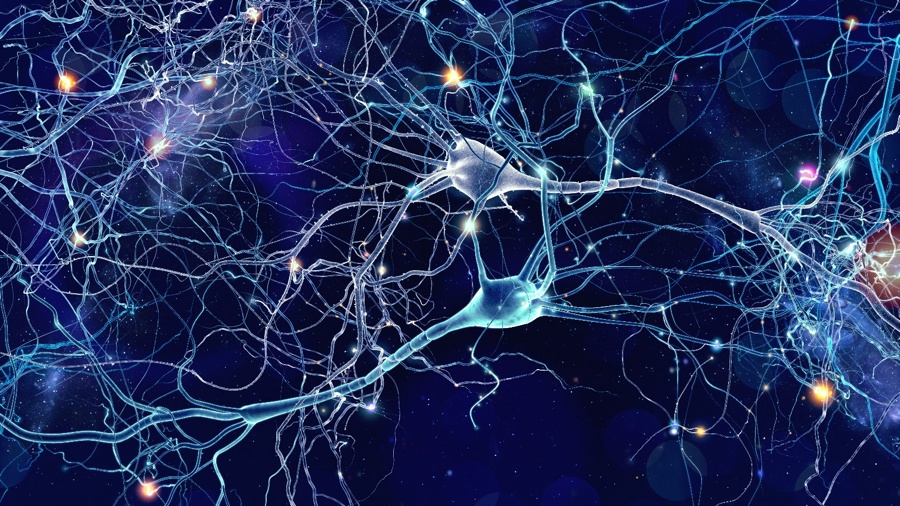As professional coaches, we’re in the business of learning. We are constantly evolving, learning and adapting our knowledge and skills to build our potential and that of our clients. Applying the latest findings in the field of neuroscience helps us do more than stay on the cusp of professional coaching, it helps us to empower our clients to understand the interplay between the brain and behaviour. Crucially, it provides access to the often unconscious realm of habitual patterns of thinking and behaviour, so we can unlearn our limitations and reconfigure ourselves for greater success.
Rewriting our ‘inner’ script
In our work with individuals and organisations, we’ve seen dramatic shifts in productivity and career progression once clients rewrite their limiting narratives. Let’s take the example of Stewart, a typical professional we’ve coached using the Brave coaching process. Stewart is a top executive who offers insight to multinational groups of executives across different functions within a large global brand. Stewart wants to develop his personal impact and that of his message when communicating with his target audiences.
The first session involved an exploration of specifically what he wanted to achieve, what his messages needed to deliver, and how he was affecting his current performance. Stewart identified two obstacles: a fear of delivering a poor performance, and a tendency to ‘spoil’ the key messages with excessive detail. This, he also put down to an anxiety about missing out important information. Fear, and the narratives he was attaching to it, became an important element of this coaching conversation.
Neuroplasticity – never stop learning
As much as neuroscience research is rapidly advancing to embrace new concepts and theories, one element is now unquestionable – the brain is capable of incredible plasticity throughout our lives and can continually learn new skills, develop new competencies and even transform emotional blocks into emotional strengths. To illustrate this, most of us have very different thoughts today than we did 20 years ago. This change in ‘you’ is neuroplasticity in action; patterns of thought, and the behaviour they drive, change as we experience, learn and adjust.

However, some of our unconscious patterns of thought and behaviour may not be so different to those we had 20 years ago. We can become ‘stuck’ in certain patterns as our brain constantly reconnects itself in the same ways – if not forced to reconfigure our previous interpretation through new experiences.
In Stewart’s case, we talked about the role our narratives play in our emotions – which can be a positive or negative influence depending on how we interpreted our experiences in the first instance. However, neuroplasticity – the brain’s proven ability to reorganise neural connections – is evidence enough that these narratives don’t need to stay fixed. As humans, we are equipped with the ability to change our narratives and the emotional states and responses they support.
As many of our clients have experienced, simply understanding more about how our brain works helped Stewart legitimise his experiences, realise that they were “normal,” and feel confident that he could change his behaviour if he wished.
Having spent over twenty years coaching top professionals, we’ve seen directly how these narratives can limit even the highest flyer. So it stands to reason that an individual’s ability to perform, is as related to emotional state as it is to level of skill. Not unlike the world’s top athletes or sporting professionals, we see one of the biggest precursors to business success comes from stepping beyond emotional discomfort and self-imposed limitation-factors. Not only through shifts in skill, but by consciously channelling the narratives that enable us to perform at our best.
The Triadic Brain model – the secret to understanding our emotions?
For emotional regulation, the Triadic Brain model (Ernst, Pine & Hardin, 2006) is broadly accepted within neuroscience and something we infuse into our corporate coaching and training. Put simply, the brain builds its ability to regulate more effectively through the development of the ventromedial prefrontal cortex, and its regulatory effect on, and interaction with the amygdala and ventral striatum. Taking this model into the workplace, if we enlist the insights of the Triadic Brain we can really start to appreciate why we all respond to stimuli in certain ways, form patterns around these responses, and then behave accordingly.
The amygdala is the part of the brain which responds to potential threats, we’ll refer to these here as triggers. It assesses each and every trigger for its own level of threat. It’s our inner smoke detector, monitoring, interpreting and evaluating whether we need to run for cover or prepare to fight. It is the AVOID button and it is also part of the habit-forming area of the brain.

On the other hand, the ventral striatum, often referred to as the dopamine reward system, seeks reward. The ventromedial prefrontal cortex uses narratives we have formed around our past experiences to regulate our responses as we first assess, and then decide whether the trigger should stimulate an AVOID or APPROACH response. What may seem at first threatening can in fact be the opposite. Similarly, a potential reward may have to be avoided.
Emotions – friend or foe?
Christine Padesky, a leading, now retired, cognitive therapist, described the importance of our narratives in influencing both positive and negative emotional states. In the Padesky Model, she relates how our feelings influence our behaviour and how that in turn directly influences our bodies – we physicalise our feelings and our behaviour. The body will in turn inform our mind. And round and round it goes – a cognitive systemic cycle that can work for us or against us.
What’s interesting is that our regulatory function has to grow and the way it develops is through (often challenging) experiences. So if you learned from a young age to protect yourself from failure by avoiding any risk-taking, leaving your comfort zone in a work context may well activate that old, well-rehearsed neural ‘soundtrack’ that registers the unknown as something to be avoided. Leveraging this insight while coaching helps us to explore (then reconfigure) the emotionally-charged narratives which underpin our choices and drive our behaviour.
Mind your language!
When we ask clients about any given situation or relationship, we also invite them to question the vocabulary and phrases they use to describe themselves and their world. This will provide insight into the choices of behaviour they exhibit and how others perceive them. Change the narratives and you begin to change the feelings – the emotions which drive your behaviour and your performance.
“I always react like this…” “I’ve always hated doing that…” “I’m just not built that way…” These are powerful, habit forming statements. After all, a thought precedes a belief, and a belief creates the will to act. And when we repetitively act, we start to form habits. Ultimately, our habits, be it at work or in our private lives, begin to stitch together the daily fabric of our lives.
As Aristotle once wisely said, “We are what we repeatedly do. Excellence, then, is not an act, but a habit.”
A Two-Minute Temporal Dissociation exercise (not just for the office!)
We can increase our ability to regulate our responses to difficult situations more effectively. When we dissociate from a trigger – a situation or person who’s acting as a catalyst for our response – we are effectively creating more distance or time to assess an appropriate, constructive response.
Consider how you want to reflect back upon a triggering event or person and your behaviour in it. Think – ‘when I look back on the conversation, situation, confrontation in an hour or two, (possibly the next day or even a month hence), how do I want to be able to see, hear and feel about myself and my conduct in that moment?’
It’s best to start this before the trigger ignites a response from you. Once you’re fully emotionally “in it” it’s harder to step back and regulate a different response. The good news is that this is neuroplasticity at its finest; the more you practise, the more automatically you’ll create helpful responses to particular people or situations that once triggered you negatively. You’ll feel more comfortable, build your resilience and improve your performance while you’re at it.

